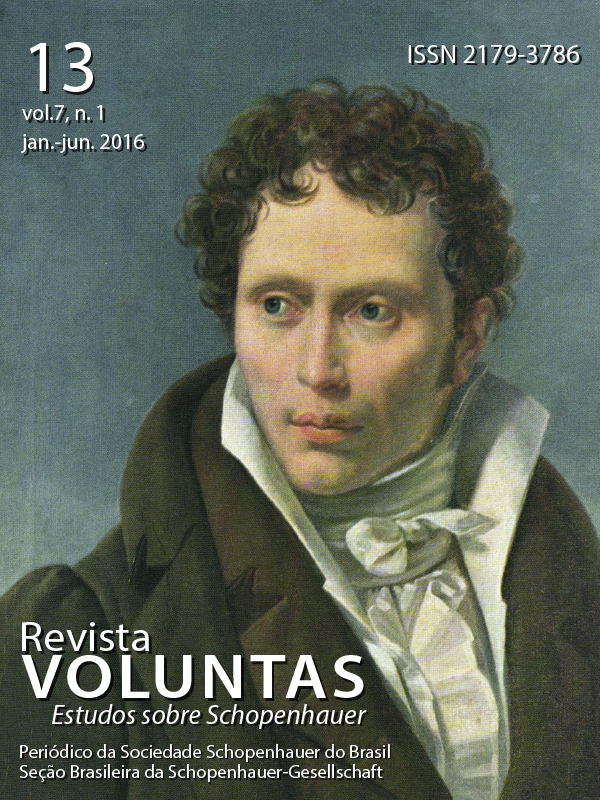Schopenhauer and the architecture
DOI:
https://doi.org/10.5902/2179378633748Keywords:
Schopenhauer, Metaphysics of Beauty, ArchitectureAbstract
This article intends to shed light on the nature of Schopenhauer’s Aesthetics by exposing the meaning that architecture takes for the author. This form of art, which deals with the most primitive forces of matter – gravity and resistance – is at the bottom of arts’ pyramid. This, however, does not mean that such form of art is not exemplary of the artistic creation. On the contrary, for him architecture exhibits one of the most important specificities of the Metaphysics of Beauty, the one that shows that a work of art is not a copy of anything, referring itself in a very particular way to the world as we represent it. This peculiarity makes architecture approximate music, the noblest of all forms of art, which contains the least possible connection with material elements.Downloads
References
FRANGENBERG, T. Posfácio. In: PANOFSKY, E. Arquitetura gótica e Escolástica. São Paulo: Martins Fontes, 1991.
HYPPOLITE, J. Genèse et structure da la Phénoménologie de L´Esprit de Hegel. Paris: Ed. Aubier Montaigne, 1946.
KANT, I. Crítica da razão pura. Trad. Manuela Pinto dos Santos e Alexandre Fradique Morujão. Lisboa: Fundação Calouste Gulbenkian, 1997.
PANOFSKY, E. Arquitetura gótica e Escolástica. São Paulo: Martins Fontes, 1991.
SCHOPENHAUER, A. Crítica da filosofia kantiana. Trad. Maria Lúcia Cacciola. São Paulo: Abril Cultural, 1980. (Coleção Os Pensadores, Vol. Schopenhauer).
SCHOPENHAUER, A. Sobre a filosofia universitária. Trad. Maria Lúcia Cacciola e Márcio Suzuki. São Paulo: Martins Fontes, 2001.
SCHOPENHAUER, A. O mudo como vontade e como representação. Tomo I. Trad. Jair Barboza. São Paulo: Unesp, 2005.
SCHOPENHAUER, A. O mundo como vontade e representação. Tomo II. Trad. Eduardo Ribeiro da Fonseca. Curitiba: Editora UFPR, 2014.
SCHOPENHAUER, A. O mundo como vontade e como representação. Tomo II. Trad. Jair Barboza. São Paulo: Unesp, 2015.
Downloads
Published
How to Cite
Issue
Section
License
The submission of original manuscripts to this journal implies the transference, by the authors, of the copyrights for printed and digital publication. The copyrights of a published manuscript belong ultimately to the author, and only the copyright for its first publication is reserved to the journal. Authors may only use the same results in other publications explicitly indicating this journal as the medium of the original publication.
Licence
Attribution-NonCommercial-ShareAlike 4.0 International (CC BY-NC-SA 4.0) - This license lets others remix, tweak, and build upon your work non-commercially, as long as they credit you and license their new creations under the identical terms.






